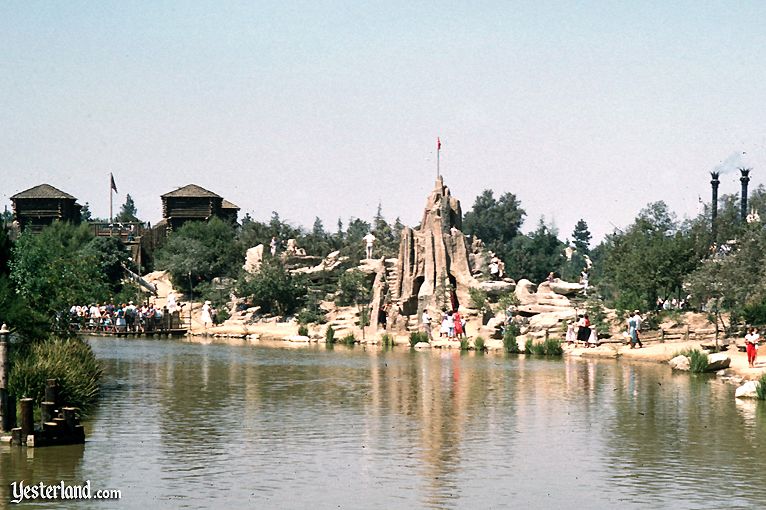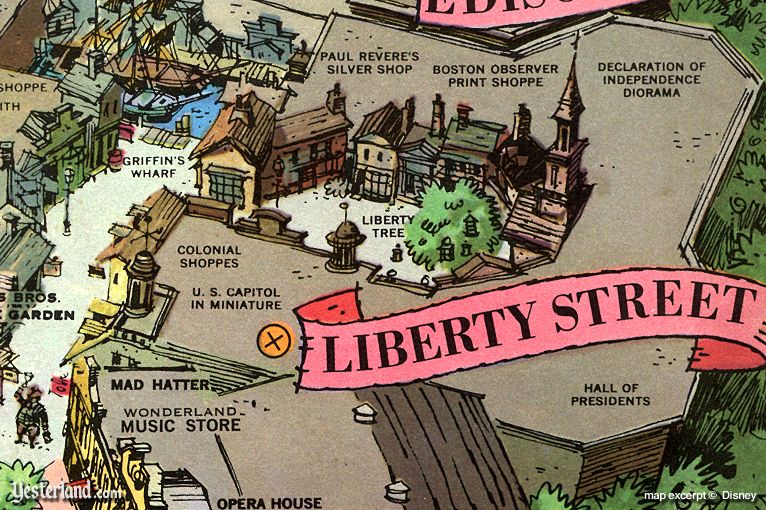|
|
|
||||
|
|||||
|
|
|||||
|
“Jim’s vast knowledge of Disney has constantly amazed me and he understands how the Disney Studio, Theme Parks, and Disneyana all tie together. Jim is an excellent Disney Heritage writer and speaker, and it’s about time he put together this collection of stories he has gathered over the years.”
— Disney Legend (2005) Tom Nabbe, |
|||||
|
Sorry. This is not an unbiased review. But I promise you I’m being honest. I consider myself lucky to have author Jim Korkis as a friend. I have enormous respect for his knowledge and the delightful way in which he shares it with others. Jim helped me with two of the more popular articles I’ve ever published at Yesterland, both dealing with urban legends about hotels at Walt Disney World; one is about the Swan and Dolphin, and the other about the Contemporary. For some reason that I haven’t figured out yet, Jim even mentions me in the acknowledgements at the end of the book (along with a small army of others). The Vault of Walt promises “unofficial, unauthorized and uncensored stories.” It makes for a catchy book cover, and it’s true that The Walt Disney Company was not involved with this book. But there’s nothing scandalous or salacious in the book. And, more importantly, there are no urban legends, unverified nonsense, or dubious interpretations of facts that sometimes tarnish books that promise “untold stories.” The Vault of Walt is not a picture book. It consists of 38 stand-alone, text-only chapters, typically around ten or twelve pages each. They are organized under four sections: “The Walt Stories,” “Disney Film Stories,” “Disney Park Stories,” and “The Other Worlds of Disney Stories.” Each chapter provides insight into some aspect of Disney history, with fascinating details from Jim’s extensive research and personal conversations with men and women who were part of that history. Don’t let the word history scare you. These are stories—ones that people who care about Disney will find entertaining. I highly recommend The Vault of Walt. I hope it’s a big success so that Jim will produce a second volume. |
|||||
|
|
|||||
|
I had a conversation with Jim about The Vault of Walt. (I’ve included a few images because I like to have images in every Yesterland article.) Werner Weiss: Your new book is based on articles that you wrote under the pseudonym Wade Sampson for MousePlanet. But you’ve written far more than 38 articles. Jim Korkis: Actually the book was planned for forty articles, ten for each section but the publisher cut two of the chapters because the book was getting too big. I’ve written hundreds of articles under the Wade Sampson pseudonym and hundreds more as Jim Korkis so I had plenty to choose from for the book. Werner: How did you choose what to include? Jim: Basically, I wanted columns that featured information that readers wouldn’t be able to find in other Disney books. I picked some columns I particularly liked writing as well as some columns where I had found a ton of new information since they were first published. I also wanted to create a balance in each section as well. Finally, I chose columns that were complete and didn’t extend into two or three other installments. Werner: How much did you change the articles for your book? Jim: I thought this was going to be “found money,” where all I had to do was cut and paste old articles and maybe do a little light rewriting. After all, I put in a lot of time and research and rewriting when they first appeared. However, when I selected the columns to use I realized that I had learned so much more about the topic since its first publication. I had gotten access to additional interviews. I had gotten corrections from readers and in some cases, people who were directly involved in the topic contacted me with even more out-of-the-ordinary information. So every page was rewritten. Every page. I am really proud of the original columns I wrote but these are all ten times better. Werner: You have stories and details that nobody else has. How do you do this? Jim: Magic. Really, it is hard work and luck. Actually, you know the secret as well as I do because you do the same thing in your columns. I always try to go to the original or primary sources. In the book, I write about The Three Little Pigs, so I went back and looked at newspaper and magazine articles from the year it came out. I discovered three great quotes from Walt about the film that have never been reprinted. I also found all sorts of other interesting tidbits like how the New York newspapers made fun of a Disney pig balloon in the Macy’s parade. So I get different stories because I try to use the original sources rather than relying solely on the work of others. Werner: You’ve also talked with a lot of people... Jim: Fortunately, I have interviewed Imagineers, animators and associates of Walt Disney for over thirty years and often asked them questions that no one else has asked. I was able to draw on those first hand accounts. People asked animator Bill Justice about animating Chip ’n’ Dale or programming the first Audio-Animatronics and such things over and over. I was the only one who asked him about a Three Little Pigs cartoon he did with X. Atencio in 1962 for Mexico or for some details of the Norconian party after the release of Snow White. There are a couple of other secrets but I don’t want to reveal everything. I want to remain a man of mystery. Werner: Why do you feel it’s important to tell these stories? Jim: I think these stories are great fun. I think that they give a wider and fuller perspective and will add to the appreciation of Walt, the films and the parks. Actually, I am quite frightened that these stories were in danger of being lost forever. Much of the documentation has been lost or destroyed over the years. Many of the people involved with these projects have passed on to the big Imagineering project in the sky without ever talking about their work. Some stories are never really told because there is no room in a book or a presentation to go off on these tangents. Sometimes an author has no clue that these stories even existed. We have lost so much Disney history already that we will never be able to recover, so this is my small attempt to get these stories into print and save some Disney history. |
|||||

Tom Sawyer Island at Disneyland in the 1950s |
|||||
|
Werner: The first chapters that I read were the ones about Disney theme parks. I was fascinated by the early plans for what became Tom Sawyer Island. Jim: I got to do an extensive interview with Disney Legend Tom Nabbe who was the original Tom Sawyer on the Island and was there at the beginning. You’ll notice his lengthy quotes give a unique perspective. Originally, Walt thought the Island would be Treasure Island and the location for filming episodes of the original Mickey Mouse Club television series. He thought of decorating the beaches with miniature reproductions of historical landmarks for guests on the steamboat to enjoy. To me, the most interesting story was Walt designing the outline of the Island itself in his barn at home and personally naming all the locations. |
|||||

Liberty Street, shown as a future enhancement to Disneyland on the 1964 souvenir map of the park |
|||||
|
Werner: Speaking of plans that were never realized, I really enjoyed your chapter on Liberty Street, 1959. Jim: I uncovered many new quotes and information about this proposed new land from the time the original rough draft of this story was first published. For one thing, Walt wanted to incorporate smells into the Hall of Presidents production. When guests watched a Civil War battle, Walt wanted them to hear and feel the rush of air of a cannonball flying overhead and then smell the burnt gunpowder from the explosion on the other side of the auditorium. It also surprised me that his plans were to have George Washington as the primary focus, not Abraham Lincoln. Writer Jim Algar said he used Walt’s script from 1961 when creating the Hall of Presidents at Walt Disney World. |
|||||

Epcot Fountain in 2003 |
|||||
|
Werner: I never knew that the Epcot Fountain had so many names over the years. Jim: Yes, nomenclature was much more casual at Disney theme parks in those days. Imagineer Marty Sklar still calls it the “CommuniCore Fountain” referring to “Community”—not “Communication”—because that is how he remembers the original name from Opening Day 28 years ago. Fountain of World Friendship. The Fountain of Nations. Innoventions Fountain. I really don’t know if Disney has still decided on an official name. Whatever it is called, it is still a beautiful location, but I wanted to share the story of its dedication about how it represents peace among all nations. Werner: Let’s talk about Jim Korkis. You lost your job during Walt Disney World’s massive layoffs last year, when many good people were shown the door in a corporate cost-cutting effort. If the economy had been stronger, other employers would have been thrilled to hire someone with your written and verbal communication skills, your creativity, your exceptional research abilities, your experience in front of people, and your record of taking the initiative to produce great results. But with Orlando unemployment at almost 12%, you’re still looking. Jim: Werner, I am blushing. I tried my hardest as a Disney cast member, which is why I was awarded the famed Partners in Excellence honor. I very much enjoyed most of my time at Disney and learned a great deal. Disney is a business. I tell folks that you can love the Disney brand and still have some concerns about how the business is being run. Over the last year, I have been able to sustain myself with some freelance writing and presentations, but it would be nice to have a more permanent job. Hopefully, one day Disney will realize the importance, especially from a business standpoint, of having a Disney historian in Florida. Unfortunately, there are too many talented and valuable people in the same leaky boat than I am in. Thanks for letting me talk a little about my book. I hope folks will enjoy it. |
|||||
|
|
|||||
|
ABOUT THE AUTHOR Jim Korkis is a well respected Disney Historian who has written hundreds of articles and done hundreds of presentations about all things Disney for over three decades. His personal research has received international acclaim for documenting the previously unexplored areas of Disney history. His extensive expertise and knowledge has been used many times by The Walt Disney Company itself for special projects. Jim is not currently a Disney cast member. For a period of time, he also wrote Disney history articles under the pseudonym “Wade Sampson.” |
|||||
|
|
|||||
|
The 2010 version The Vault of Walt, reviewed here, is now out-of-print and only available at collector prices. There is a new, revised edition (December 2012) with five new stories and a lower price. |
|||||
|
|||||
© 2010-2012 Werner Weiss — Disclaimers, Copyright, and Trademarks Updated December 16, 2012.
Image of front cover of The Vault of Walt: Courtesy of Ayefour Publishing and Jim Korkis. |
|||||
